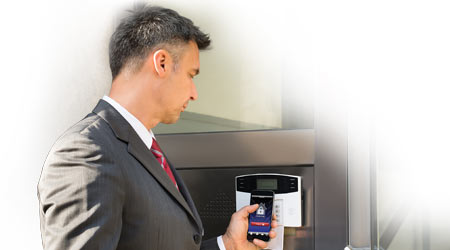 Door hardware products have become key components in digital access control systems that offer managers expanded opportunities to protect facilities occupants day and night.
Door hardware products have become key components in digital access control systems that offer managers expanded opportunities to protect facilities occupants day and night.Door Hardware: A New Generation
Changes in facility needs and product technology combine to create opportunities for managers specifying essential components.
Door hardware components have long been important components of institutional and commercial facilities. Maintenance and engineering managers relied on mechanical locks, handles, hinges, and closers primarily to keep intruders out at night.
Now, everything has changed. New-generation door hardware products have become key components of digital access control systems that offer managers expanded opportunities to protect facilities and occupants day and night, to help monitor the comings and goings of occupants and visitors, and to provide an essential layer of protection in emergencies.
Managers responsible for ensuring the reliable and effective performance of door hardware face a series of challenges. They need to understand the latest generation of door hardware technology, match specific door hardware products to common facility safety and security challenges, and ensure these products deliver the intended benefits related to system performance and reliability.
A new generation
The latest generation of door hardware products brings with it an array of advances related to technology and performance.
Smartphones have joined the list of devices — such as pass codes, fobs, keys or key cards — that allow the user to unlock an electronic door lock and deadbolt, either at the door or from a distance.
Updated continuous gear hinges provide better concealed or surface-mounted designs, and improved spring-loaded closer hinges close automatically to meet fire-door codes.
To address user health concerns, germicide applications that prevent cross-contamination can be applied to any existing door hardware finish. Antimicrobial copper alloy finishes are available for knobs, handles and touch plates. Tests have shown they can reduce microbes by 58 percent on doors to hospital intensive care units.
New-generation access devices include fobs, magnetic cards, proximity cards, keypads, smartphones and several combinations of these. They not only control the physical access. They also identify who enters, when access is granted, and failed access attempts. A historical record can be helpful in identifying building in case of a fire or other emergency.
Biometric readers that use fingerprints or facial recognition identification in combination with pass code, fob, key, or card enable managers to control access to high-security areas. Technicians also can wire intercoms to the electronic strike so that once the caller is identified, by voice or on screen, the door lock is opened remotely with a click of the phone keypad.
Wireless cellular systems can be installed and can operate quickly because they do not require extensive wiring. With battery backup, a wireless system using cell phone towers can back up a wired system in the event of a power failure.
Related Topics:














